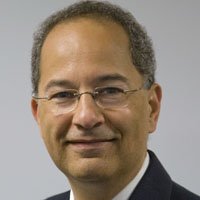Ortega Recognized by WHO for Pulse Oximetry Training Video
Rafael Ortega, MD, professor of anesthesiology at BUSM and anesthesiologist and vice-chair of academic affairs for the department of anesthesiology at Boston Medical Center (BMC), received a Letter of Commendation from the World Health Organization (WHO) for producing a training video on pulse oximetry. The video, which has been distributed worldwide and is available in six languages, is a major component of the WHO’s efforts to improve anesthesiology safety for patients worldwide.
Pulse oximetry is used to monitor a patient’s condition and can be useful for safe anesthesia delivery – so much so that many countries now require its usage in operating rooms. Availability is limited in remote and impoverished countries, and there are limited educational materials available about how to use pulse oximetry. To address this issue, the WHO established the Global Pulse Oximetry Project with the goal of improving anesthesia care in operating rooms in low and middle-income countries where there is a lack of pulse oximetry technology.
The video, which took Ortega and his colleagues two years to complete, includes a combination of real and simulated operating room footage with computer-generated animation to illustrate proper usage of oximetry equipment. It also provides information about what health care practitioners need to do if a patient experiences hypoxemia.
“The most significant part of this effort is the potential for a global impact,” said Ortega, who also is the associate dean for diversity and multicultural affairs at BUSM. “We are honored to receive the support from the World Health Organization and be recognized by our peers for our efforts to improve anesthesia patient safety worldwide.”
The Anesthesia Patient Safety Foundation also gave the video the award for best scientific exhibit in patient safety during the 2010 American Society of Anesthesiologists annual meeting this past October.
The video is available in the following languages: English, Spanish, Arabic, Russian, Mandarin and French.
For more information, visit http://www.who.int/patientsafety/safesurgery/pulse_oximetry/en/